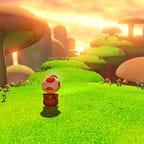‘The Bone Ships’ is an excellent book about sea dragons
RJ Barker’s imagination and world-building make this project stand out
I got roughly 2/3s through RJ Barker’s excellent The Bone Ships before I realized that the term the book used for sea dragons — “arakeesians” — was unique to his work. I had googled the term, looking for some pictures to jog my imagination, but it turns out that these mythical creatures only exist (at least as far as I can tell) in The Bone Ships. This realization told me two things: that Barker has a pretty cool imagination and that he’s really good at telling stories.
The Bone Ships is a nautical fantasy story about hunting down a sea dragon. There are many ways to describe it, but first and foremost I’d like to point out that it’s an excellent book. Barker is really good at world-building, and he perfectly describes a hostile society, based in an archipelago, with an ocean filled with vicious predators. Set in this locale is an engrossing story with deep lore and believable conflict.
The story of this book (which I’ll leave as spoiler-free as I reasonably can) is about the two themes of hunting and war. It’s set in a massive archipelago of islands, against the backdrop of two civilizations that constantly at war with one another. But, and here’s the catch — they build their mightiest ships out of dragon bones. And since dragons haven’t been sighted for decades, both sides are slowly running out of materials for war.
When a sea dragon is sighted, Joron Twiner (the protagonist) and his ship (led by captain Meas Gilbryn) set after it to hunt it down. But instead of harvesting its bones for supplies, their goal is to protect the arakeesian as long as possible, and then kill it in the far north where its bones will sink harmlessly to the depths. Twiner’s captain and her crew don’t want the dragon for themselves, or even for their civilization. They want to halt future wars by depriving both sides of materials.
The Bone Ships is a challenging read in many ways. The prose flows smoothly enough, but the first few chapters are a cascade of new terms and ideas that are central to the plot. For example, most smaller ships are built out of materials called varisk and gion, two readily available plants that are far less durable (but far more available) than dragon bones. That’s easy to follow after a few chapters, but new information like this comes many times in the first few pages.
The social structure of the Hundred Islands (one of the two civilizations, and the one our protagonist hails from) is also pretty dense, though it’s really only the subject of a few chapters. I’ll leave most of the details out, since I think they’re pretty interesting to uncover and I doubt I can do them justice here. But, I’ll at least say that it’s a matriarchal society with very particular ideas about birth, physical ability, and punishment. It’s not a welcoming place by any means.
However, these details, as numerous as they are at first, give the book’s story a valuable texture and depth. Once the action truly begins about a third of the way through, I cared a lot more about what I was reading than I would have without this background information. The intricate foundation of the story successfully forged an emotional connection with my reading.
And like I wrote a few paragraphs above, the uniqueness of the world is also worth noting on its own. The sea dragon, the object of their pursuit, is a compelling character on its own. But there are lots of other little twists that I don’t see often (or ever) in other fantasy novels. This book doesn’t redefine the genre or change how every new book should be written, but it’s different in ways that make it enjoyable.
The Bone Ships is also a deeply melancholy book, though not without its moments of hope. Twiner serves on a black ship, which is a punishment for criminals who are condemned to carry out dangerous missions until they die. So, from the beginning, our protagonist’s view of the world is pretty bleak. There are multiple occasions throughout the story when Twiner expects to die and accepts his fate. But, as the plot develops, he starts to carry a little more hope.
When I think about why I enjoyed this book so much, I keep coming back to its setting and world. I know there are probably a few other fantasy novels set at sea out there, but this is the first I’ve read and I really liked it. Barker did an incredible job of creating an interesting world that felt alive, and every character’s motivation seemed believable. Book two in this trilogy is set to come out soon — I’m interested to see how Barker continues to flesh out his world and characters.
The views expressed are mine alone and do not represent the views of my employer or any other person or organization.
